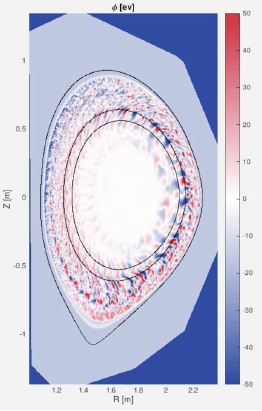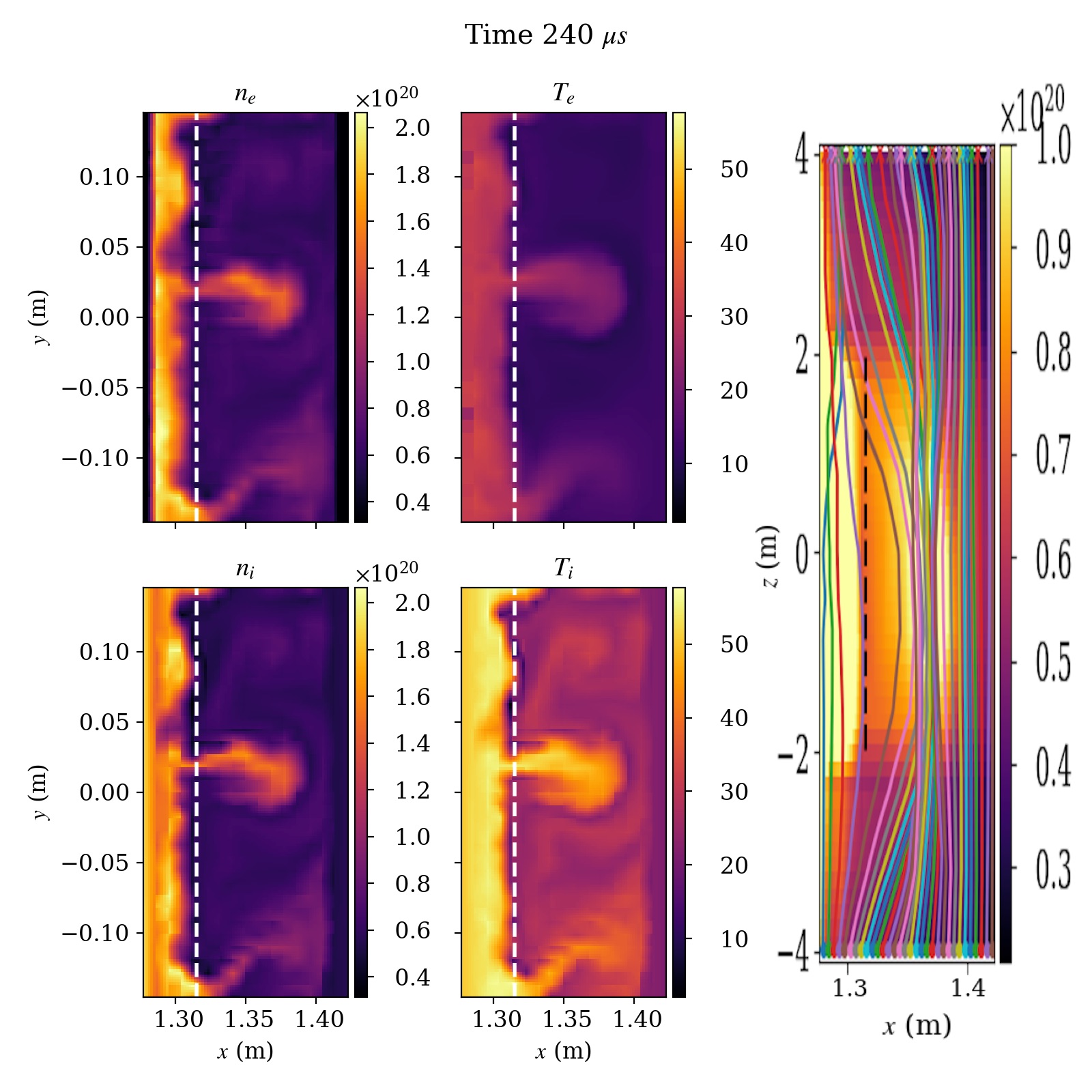Speaker
Description
A. Bhattacharjee(a), B. Allen(g), C.-S. Chang(a), H. Chen(f), Y. Chen(f), J. Cheng(f), E. D’Azevedo(b), P. Davis(e), J. Dominski(a), M. Dorf(c), M. Dorr(c), S. Ethier(a), A. Friedman(c), K. Germaschewski(h), R. Hager(a), A. Hakim(a), G. Hammett(a), J. Hittinger(c), S. Janhunen(d), F. Jenko(d), S. Klasky(b), S. Ku(a), R. Kube(a), L. LoDestro(c), N. Mandell(a), G. Merlo(d), A. Mollen(a), M. Parashar(c), J. Parker(c), S. Parker(f), F. Poli(a), L. Ricketson(c), A. Scheinberg(a), M. Shepherd(i), A. Siegel(g), S. Sreepathi(b), B. Sturdevant(a), E. Suchyta(b), P. Trivedi(a), G. Wilkie(a), and M. Wolf(b)
(a) Princeton Plasma Physics Laboratory, Princeton, NJ, (b) Oak Ridge National Laboratory, Oak Ridge, TN, (c) Lawrence Livermore National Laboratory, Livermore, CA, (d) Institute for Fusion Studies, University of Texas at Austin, Austin, TX and Max Planck Institute for Plasma Physics, Garching, (e) Rutgers University, New Brunswick, NJ, (f) University of Colorado, Boulder, CO (g) Argonne National Laboratory, Chicago, IL
(h)University of New Hampshire, Durham, NH (i) Rensselaer Polytechnic Institute, Troy, NY
Whole Device Modeling (WDM) is generally described as assembling physics models that provide an integrated simulation of the plasma. All components that describe a magnetic confinement device, from macroscopic equilibrium to micro-turbulence and control systems, are included in WDM, which describes the evolution of a plasma discharge from start-up to termination. Economical and safe operation of burning plasma devices requires predictive WDM with a confidence level established by validation and uncertainty quantification. Simulations covering the whole device, while certainly not a substitute for experiments, are much more cost-effective than building multiple billion-dollar facilities to test new ideas or concepts, similar to how aircraft manufacturers used simulations to reduce the number of physical wings they needed to build in designing superior aircraft (1).
The High-Fidelity Whole Device Model of Magnetically Confined Fusion Plasma is an application (hereafter referred to as WDMApp) (2,3) in the DOE Exascale Computing Project (ECP). The ECP is a DOE 413.3b project---the largest in the DOE Office of Science--- and is governed by the same rigorous rules of operation as major experimental facilities. The ultimate problem target of the project is the high-fidelity simulation of whole device burning plasmas applicable to an advanced tokamak regime (specifically, an ITER steady-state plasmas with ten-fold energy gain), integrating the effects of energetic particles, plasma-material interactions, heating, and current drive. The most important step in this project, and one that involves the highest risk, is the coupling of two existing, well-established, extreme-scale gyrokinetic codes – the GENE continuum code for the core plasma, and the XGC particle-in-cell (PIC) code for the boundary plasma. We have accomplished this challenging milestone for the first time in the magnetic fusion community. Fig. 1 demonstrates a coupled GENE-XGC in a WDMApp simulation for nonlinear ITG turbulence.

These developments would not be possible without the remarkable advancements in edge turbulence simulation codes for which XGC is an exemplar, along with COGENT and GKEYLL.
COGENT is a continuum gyrokinetic code for edge plasmas (4, 5). The code is distinguished by its use of fourth-order conservative discretization and mapped multiblock grid technology to handle the geometric complexity of a tokamak edge. It solves full-f gyrokinetic equations for an arbitrary number of plasma species, which can also be coupled to a set of lower-dimensionality fluid equations in cases where a reduced fluid model is adopted to describe electrons or neutrals. The code offers a number of collision models, ranging from the simple Krook operator to the fully nonlinear Fokker-Plank operator, and includes an ad-hoc anomalous transport model that can be utilized for the case of 4D axisymmetric transport calculations. Recent applications of the COGENT code to the analysis of cross-separatrix edge plasma properties include (a) 4D calculations, which demonstrate the values of radial electric field and toroidal rotation comparable to those observed on the DIII-D facility, and (b) 5D calculations of ITG turbulence, which elucidate the role of magnetic shear stabilization in the X-point region.
The GKEYLL project (6) is developing a continuum gyrokinetic capability that can evolve the electromagnetic gyrokinetic equations in the tokamak edge. The code uses a Hamiltonian form of the full-f equations, and for electromagnetic terms, uses a symplectic formulation. A novel version of a high-order discontinuous Galerkin scheme is used, ensuring that total energy (particles plus fields) is conserved by the spatial discretization. GKEYLL has performed the first fully nonlinear full-f continuum simulations of electromagnetic gyrokinetics in the scrape-off layer (SOL), including sheath boundary conditions. In Fig. 2 we show a snapshot of the turbulence profiles when statistical steady-state has been obtained. Shown are density and temperature contours near the midplane. Intermittent blob-like structures are seen ejected from the source region as they propagate outwards. Comparisons with electrostatic simulations show that the turbulence is larger amplitude and much more intermittent in the electromagnetic case. Also shown are magnetic field lines between the top and bottom divertor plate being stretched by blobs. Full details of the scheme and detailed description of the results are described in (7).

References
(1) “Case Study: Boeing Catches a lift with High Performance Computing,” Report by Council on Competitiveness, 2009
(2) G. Merlo, J. Dominski, A. Bhattacharjee, C.-S. Chang, F. Jenko, S. Ku, E. Lanti, and S. Parker, Phys. Plasmas 25, 062308 (2018)
(3) J. Dominski, S.-H. Ku, C.-S. Chang, J. Choi, E. Suchyta, S. Parker, S. Klasky, and A. Bhattacharjee, Phys. Plasmas 25, 072308 (2018)
(4) M. Dorf and M. Dorr, Contr. Plasma Phys. 58, 434 (2018)
(5) M. Dorf and M. Dorr, Contr. Plasma Phys. (2020); available online DOI: 10.1002/ctpp.201900113
(6) A. Hakim, N. Mandell, T. Barnard, M. Francisquez, G. Hammett, and E. Shi, Continuum Electromagnetic Gyrokinetic Simulations of Turbulence in the Tokamak Scrape-Off Layer and Laboratory Devices, submitted to Phys. Plasmas. (2020)
(7) N. Mandell, A. Hakim, G. Hammett, and M. Francisquez, J. Plasma Physics 86, 149 (2020)
| Affiliation | Princeton Plasma Physics Laboratory |
|---|---|
| Country or International Organization | United States |
